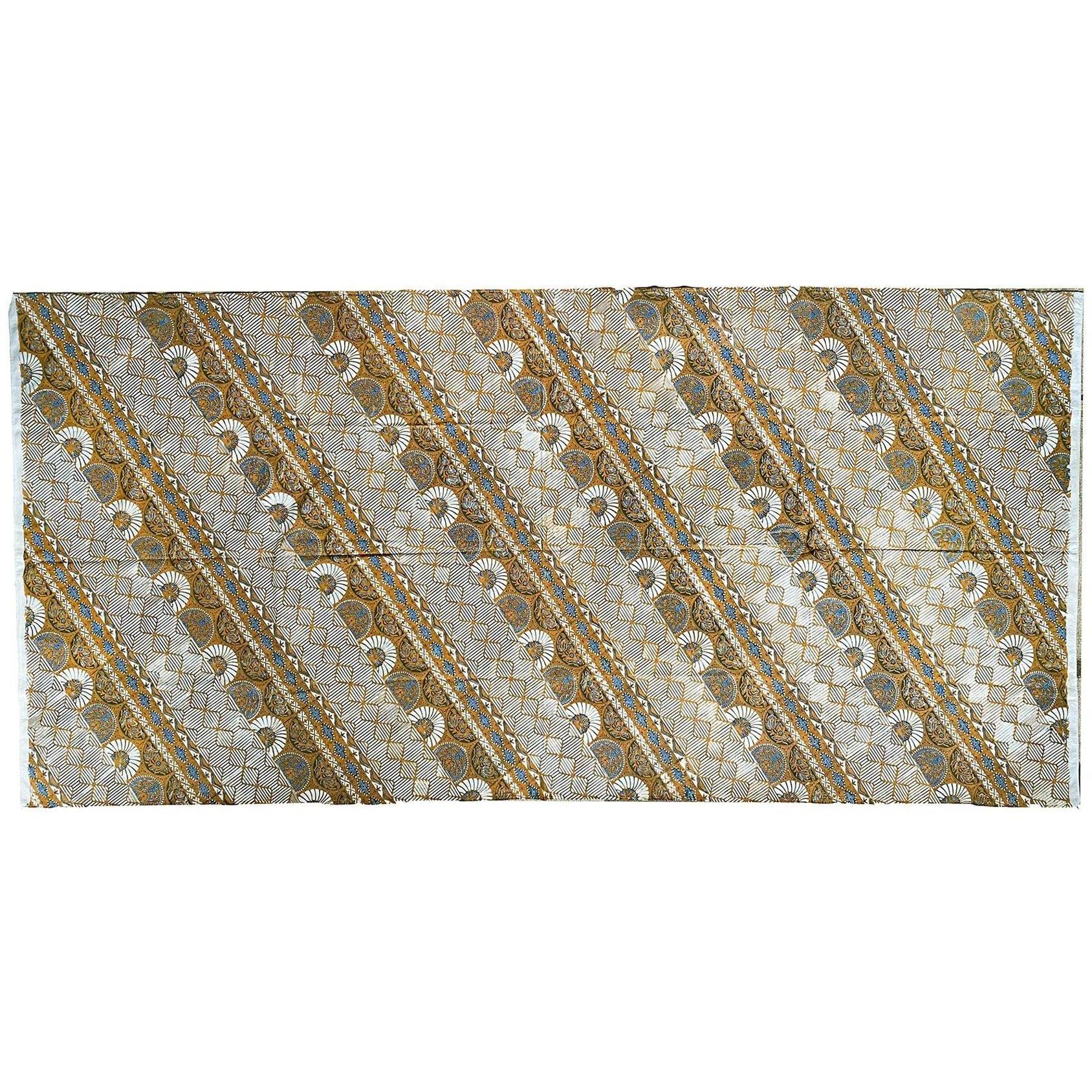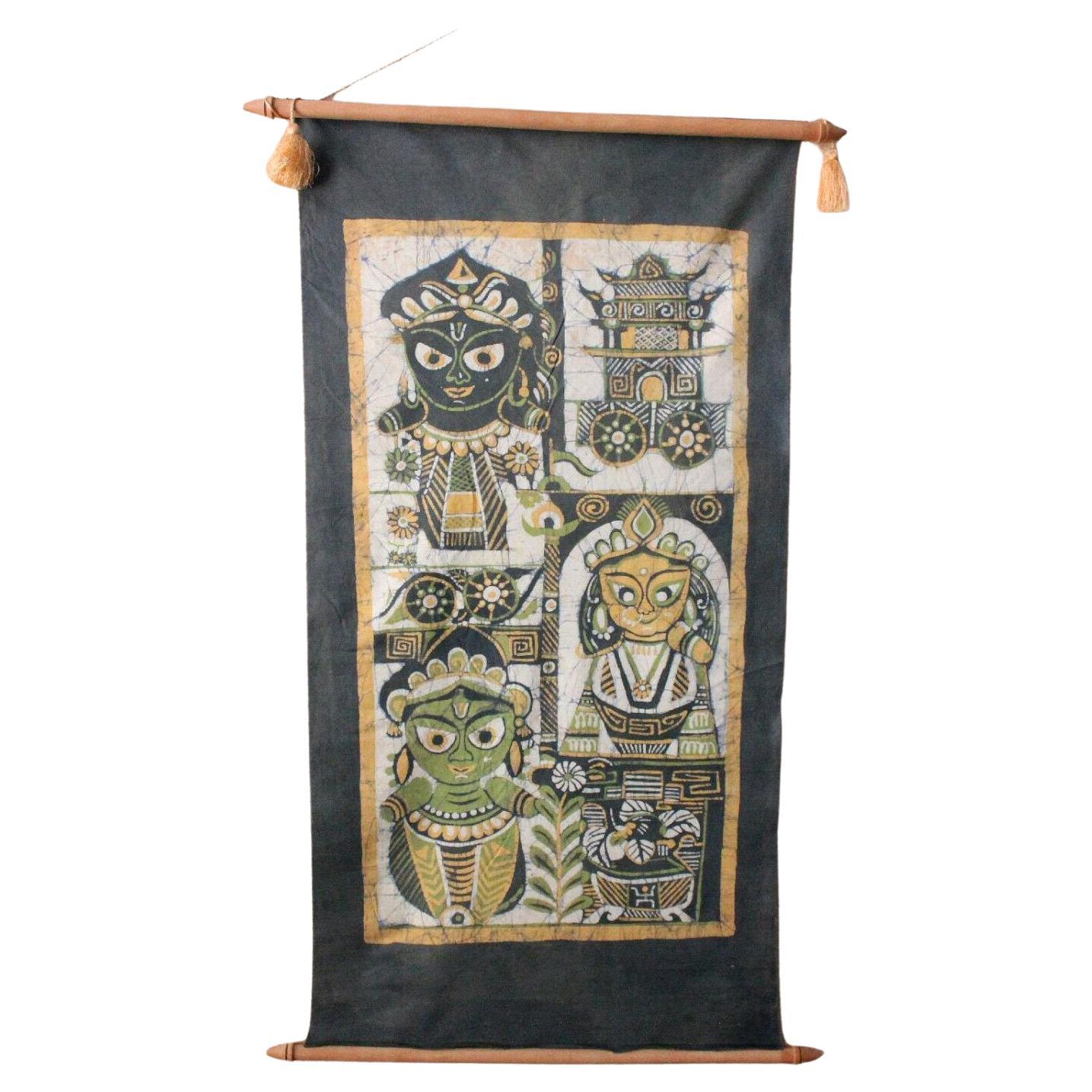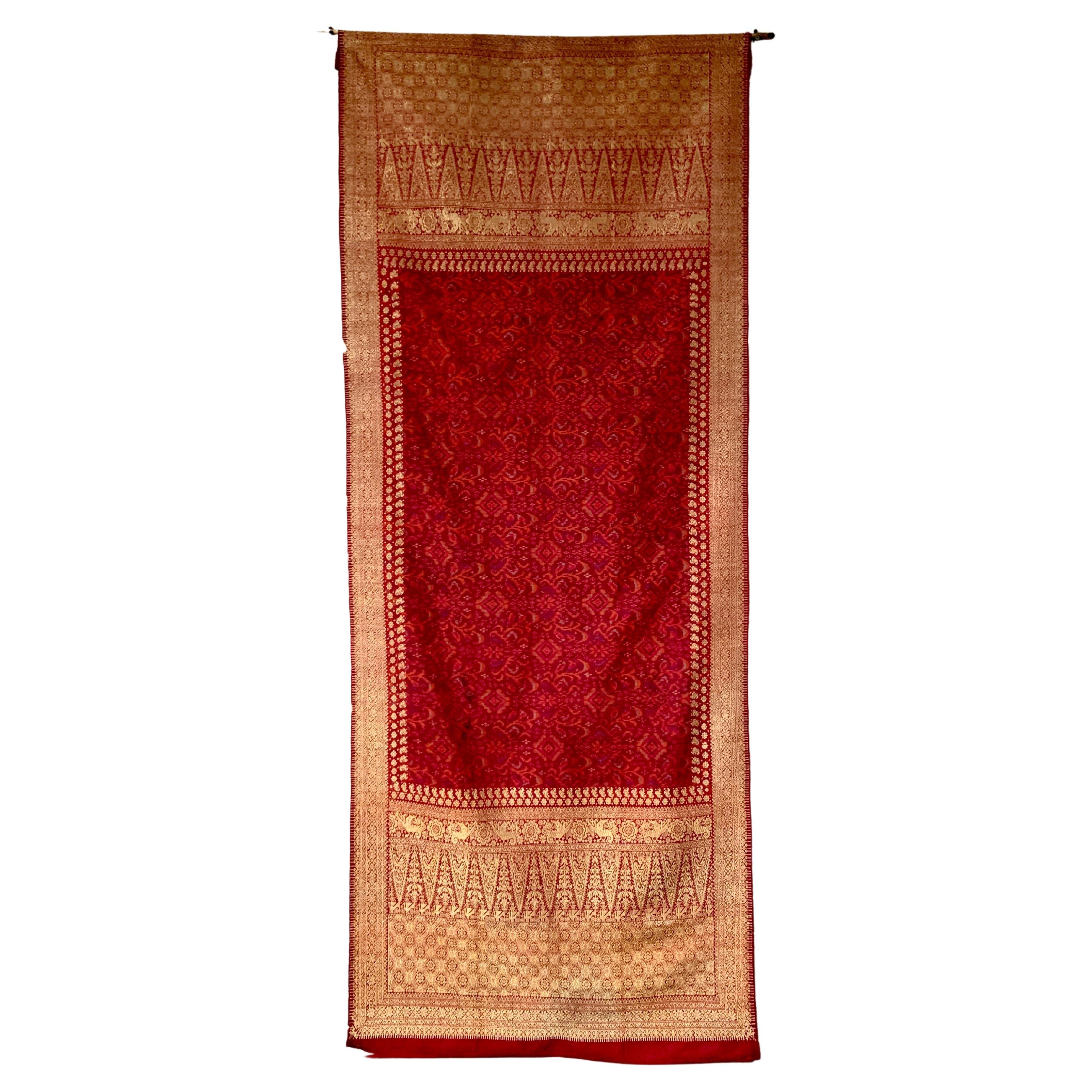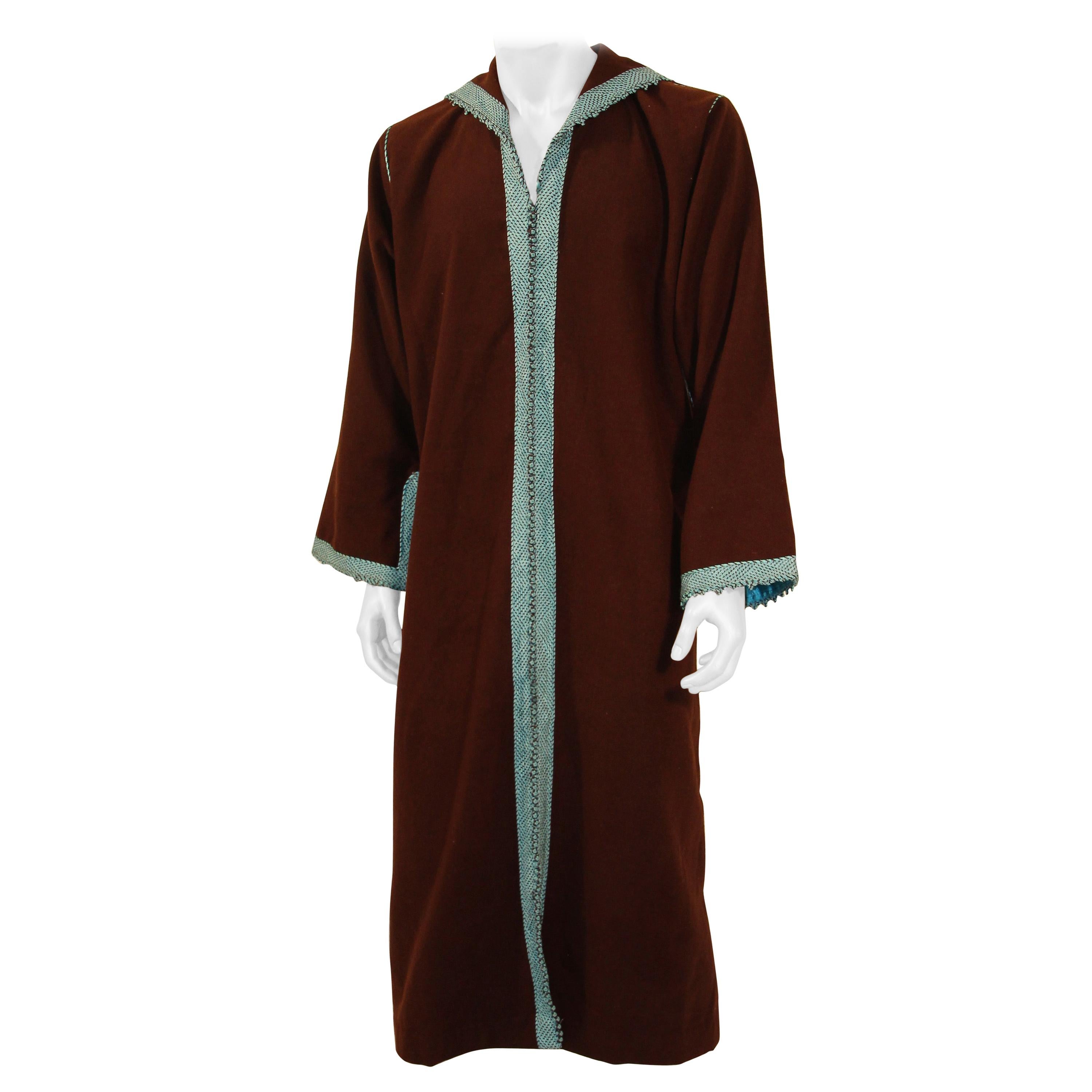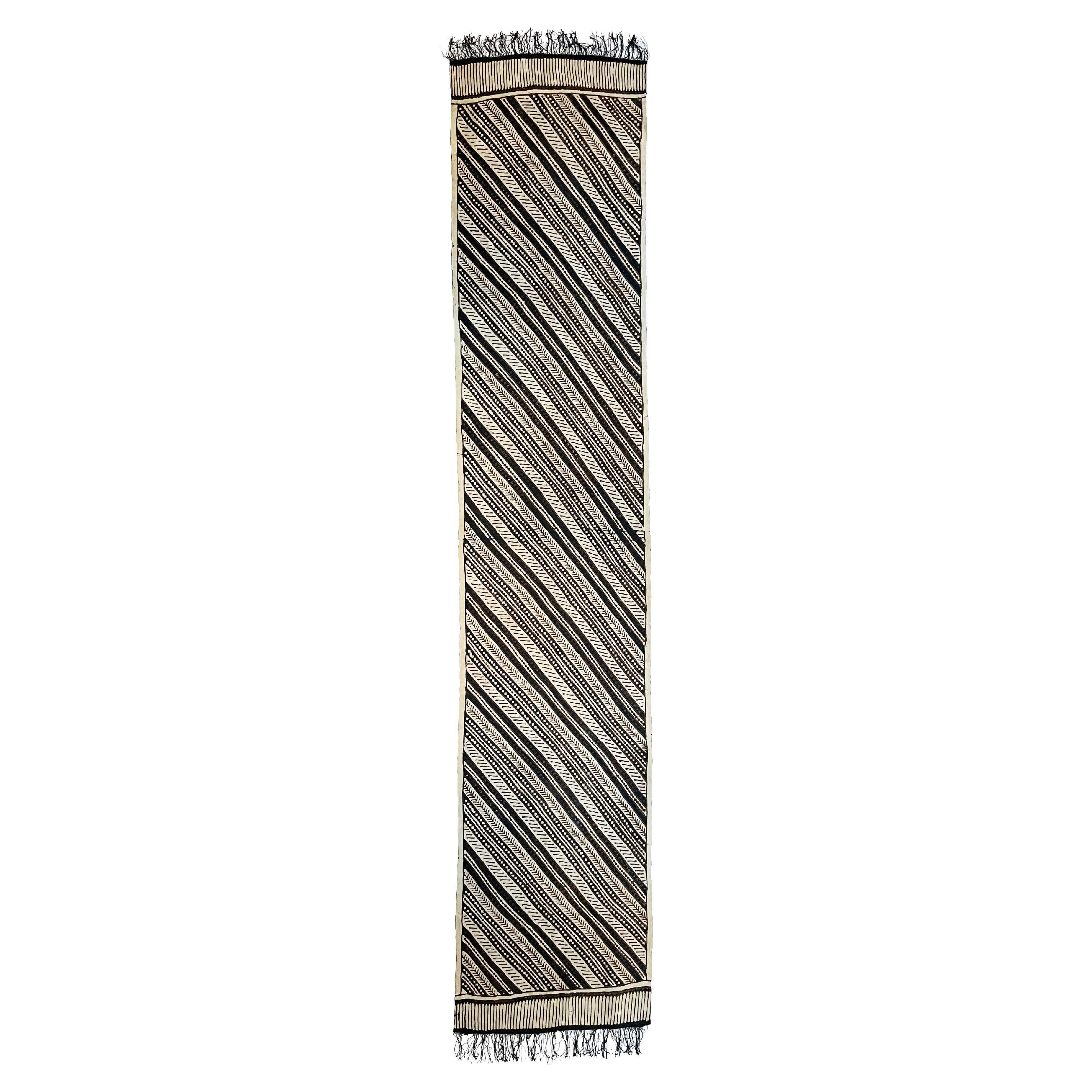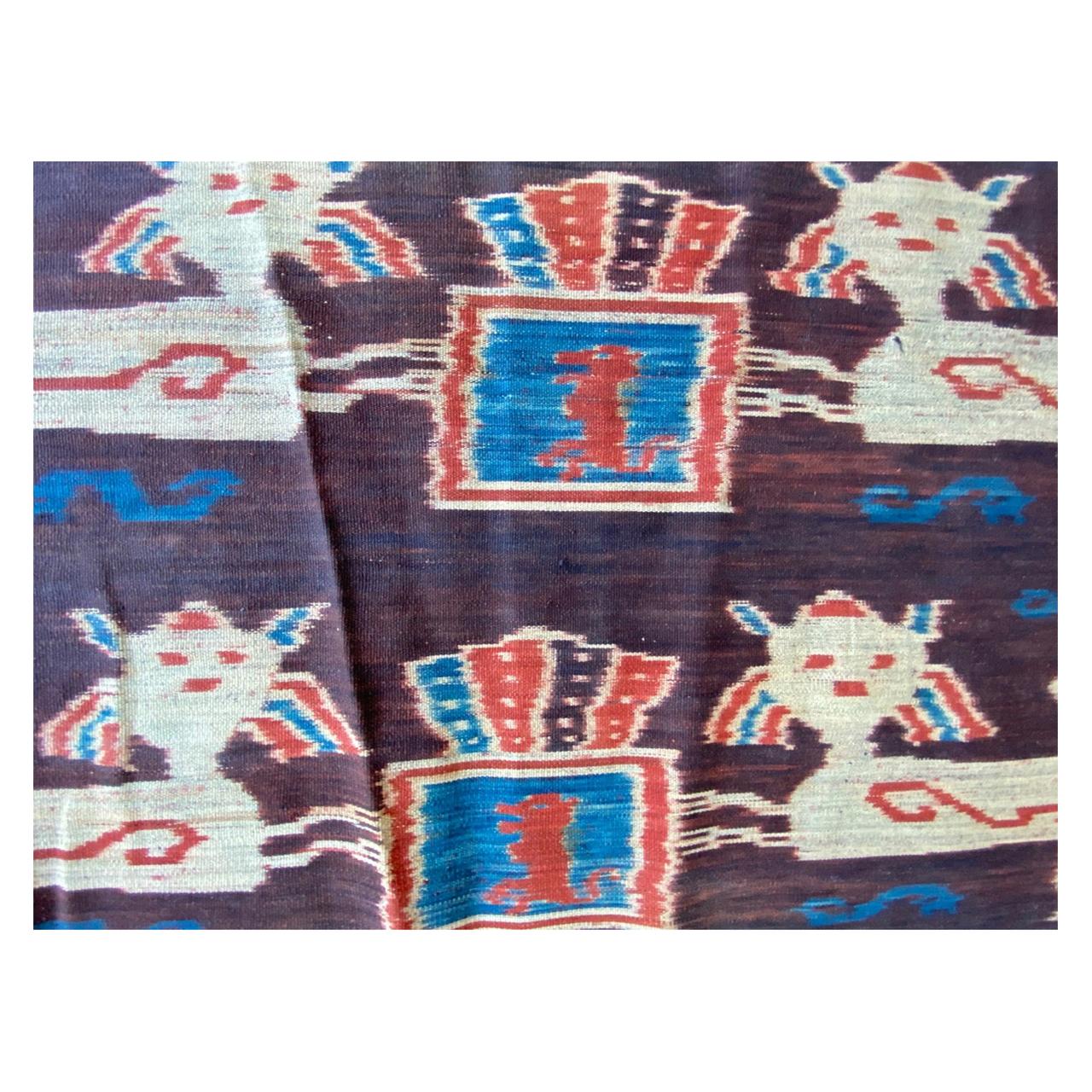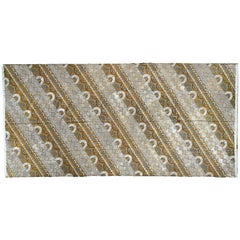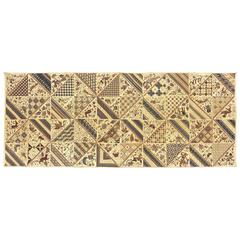
Rare 1970s-1980s Kain Panjang Batik Tulis, Long Cloth for Hip Wrapper
View Similar Items
1 of 4
Rare 1970s-1980s Kain Panjang Batik Tulis, Long Cloth for Hip Wrapper
About the Item
You May Also Like
- Mid-20th Century Batik, Kain, Hip-Wrap Clothing Garment, JavaLocated in Point Richmond, CABatik, Kain, hip-wrap clothing garment, java, mid-20th century. Worn by both men and women. Black, blue, soga brown and ecru. Designs are applied using the wax resist-dye method. Typical of those made in Surakarta (Solo) one of the two central Javanese cities known for its highly developed batik art...Category
20th Century Javanese Mid-Century Modern Textiles
MaterialsCotton
- Andrianna Shamaris Antique Sumba Hinggi Hip Cloth with a Suede BorderLocated in New York, NYWe added a bone suede border to this beautiful Sumba Hinggi ikat on one side. Mythical characters, lizards, horses and birds intermingle in this graphic hip cloth from Sumba. Ikat is...Category
Early 20th Century Indonesian Tribal Pillows and Throws
MaterialsSuede, Cotton
- African Batik Cloth Natural Hand-woven Hand-Printed Cotton Fabric Ghana 10 YardsLocated in North Hollywood, CAAfrican Batik Cloth Natural Hand-woven Hand-Printed Cotton Fabric Ghana 10 yards. Colors are organic earth tone beige and light brown in geometric design. Non waxed fabric circa 1950s. Hand made in Ghana Africa. Museum Quality Original Long Piece. 380 inches, (30 ft 10 yards Long) x 46 inches Inches Wide( 4ft). Could be use to make pillows or upholstery. History of Batik in Africa: Batik, a traditional fabric art technique, has a rich history in Ghana, West Africa. The practice of batik involves using wax to create intricate patterns on fabric, which is then dyed to achieve the desired design. While batik has its origins in Asia, particularly in Indonesia, it has been embraced and adapted by various African countries, including Ghana. In Ghana, batik-making can be traced back to the mid-20th century when it gained popularity as a form of traditional textile art. The craft was introduced by artists and artisans who were inspired by the vibrant and expressive nature of batik. These early practitioners experimented with different designs, colors, and patterns, infusing local themes and motifs into their creations. Over time, batik became an important part of Ghanaian culture and identity. It is not only used for clothing but also for various decorative and functional items such as wall hangings, tablecloths, and accessories. The art form often reflects the rich cultural heritage of Ghana, incorporating symbols, proverbs, and traditional stories into the designs. Ghanaian batik artists often employ a combination of traditional and contemporary elements, creating a unique fusion of styles. The process of making batik involves applying hot wax to the fabric using various tools to create the desired patterns. The wax acts as a resist, preventing dye from penetrating the waxed areas. After dyeing, the wax is removed, revealing the intricate designs on the fabric. Today, batik-making in Ghana continues to thrive as both a traditional craft and a form of artistic expression. Many artisans and designers draw inspiration from Ghana's diverse cultural landscape, incorporating elements from different regions and ethnic groups into their batik creations. The art form has also gained international recognition, with Ghanaian batik products being sought after both locally and abroad. In summary, the history of batik in Ghana is a testament to the creativity and adaptability of artists who have embraced and transformed this traditional technique into a vibrant and culturally significant art form within the country. HISTORY OF BATIK In the mid-nineteenth century, the Belanda Hitam, or "Black Dutchmen," are said to have introduced batik to West Africa after serving as indentured soldiers for the Dutch in Indonesia. Returning from their conscriptions with trunks of fine Javanese batik, the opulent patterns captured the imagination of their friends and relatives. However, textile history is complex, and only a handful of recruits returned to West Africa with batik due to delayed payments. Batik, with roots traced to Egyptian mummies, is a tradition found globally, from Southeast Asia to Japan and India. Europeans, particularly the Dutch, played a significant role in industrializing batik from the seventeenth century onward. In West Africa, Dutch Scholar Ineke van Kessel suggests that batik arrived from India over trans-Saharan routes. Local populations, like the Yoruba in Nigeria, incorporated wax printing into their textiles. European traders brought wax and non-wax fabrics to West Africa in the seventeenth century, targeting a population ready for their consumption. European designers adapted prints for the African market...Category
Mid-20th Century Ghanaian Folk Art Textiles
MaterialsCotton
- Indonesian ClothLocated in Roma, ITIndonesian cloth finely decorated with floreal motives in yellow and green on a dark blue background. The item is not restored and is in very good condition.Category
Mid-20th Century Indonesian Modern Textiles
MaterialsTextile
$1,259 Sale Price25% Off - Batik Bag Never UsedLocated in Alessandria, PiemonteBatik envelope-bag: perfect, never used. B/2432.Category
Late 20th Century Indonesian Other Textiles
MaterialsCotton
$210 Sale Price20% Off - Rare K. Laxma Goud Batik. Indian Fine Art. Padma Shri. Early Mid Century ModernLocated in Peoria, AZSuper Rare Goud Work, K. LAXMA GOUD BATIK THREE GODDESSES EPIC & RARE EARLY "COMMERCIAL MID CENTURY" STYLE! CIRCA 1967 ! LARGE! Approx . 33" By 20" Here is a superb batik fro...Category
Mid-20th Century Indian Mid-Century Modern Textiles
MaterialsFabric
